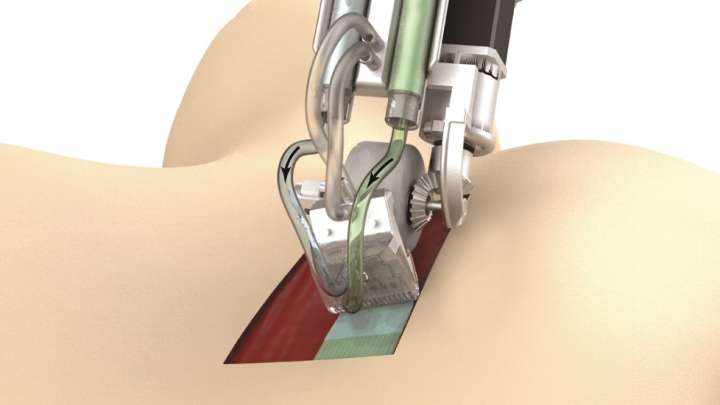Handheld Bioprinter That Prints Skin Cells Onto Wounds Could Help Treat Serious Burns
A handheld device that “prints” new skin cells onto a wound has been successfully trialed by a team of researchers in Canada. The 3D-printed layer of skin could be used to help patients with severe burn injuries too extensive to allow skin grafts.
According to the World Health Organization (WHO), an estimated 180,000 deaths every year are caused by burns. Even non-fatal burn injuries are a leading cause of morbidity, disfigurement, and disability. Current methods for treating full-thickness burns, which destroy both the upper and lower layers of skin, include scaffolds and in vitro skin substitutes as well as skin grafts.
However, senior author of a paper published in the journal Biofabrication, Professor Axel Günther from the University of Toronto, explained the drawbacks of these methods in a statement.
“Skin grafts, where the damaged tissue is removed and replaced with skin taken from another area of the patient’s body, are a standard treatment for serious burns,” he said. “However, in cases where a patient has extensive full-thickness burns… there is not always sufficient healthy skin left to use.
“While there are alternatives… none are ideal. Collagen scaffolds rely on tissues and cells surrounding the wound to fully heal, while in vitro skin substitutes can take many weeks to prepare, and are difficult to apply successfully to a patient when the burn area is large.”

Enter stage right, the team’s bioprinter. The handheld device “prints” sheets from soft rollers in situ onto the wound. One key achievement of this iteration of the device is its ability to deposit these precursor sheets onto wounds of any size, shape, and topography. This is essential for treating a wider variety of burn wounds, which may not be flat, nor horizontally oriented.
The sheets are comprised of a bioink based on fibrin, an insoluble protein involved in the clotting of blood, and infused with mesenchymal stromal cells (MSCs). MSCs assist in the body’s immune response and support the growth of local cells. The researchers found the bioink could be deposited uniformly on surfaces with an inclination of up to 45 degrees.
“In this study, we tested whether the device could do this effectively by using it to treat full-thickness burns in pigs,” said co-author Dr Marc Jeschke, medical director of the Ross Tilley Burn Centre at Sunnybrook Health Sciences Centre in Toronto. “We found the device successfully deposited the ‘skin sheets’ onto the wounds uniformly, safely and reliably.”

Not only was the procedure a success but the healing process of the MSC-treated wounds, with regards to inflammation, scarring, and contraction, was significantly reduced compared with untreated wounds and those treated with a collagen scaffold.
“Further study is required, but the signs are promising and the potential clinical applications for the device extend well beyond full-thickness burn injuries,” concluded Professor Günther.



